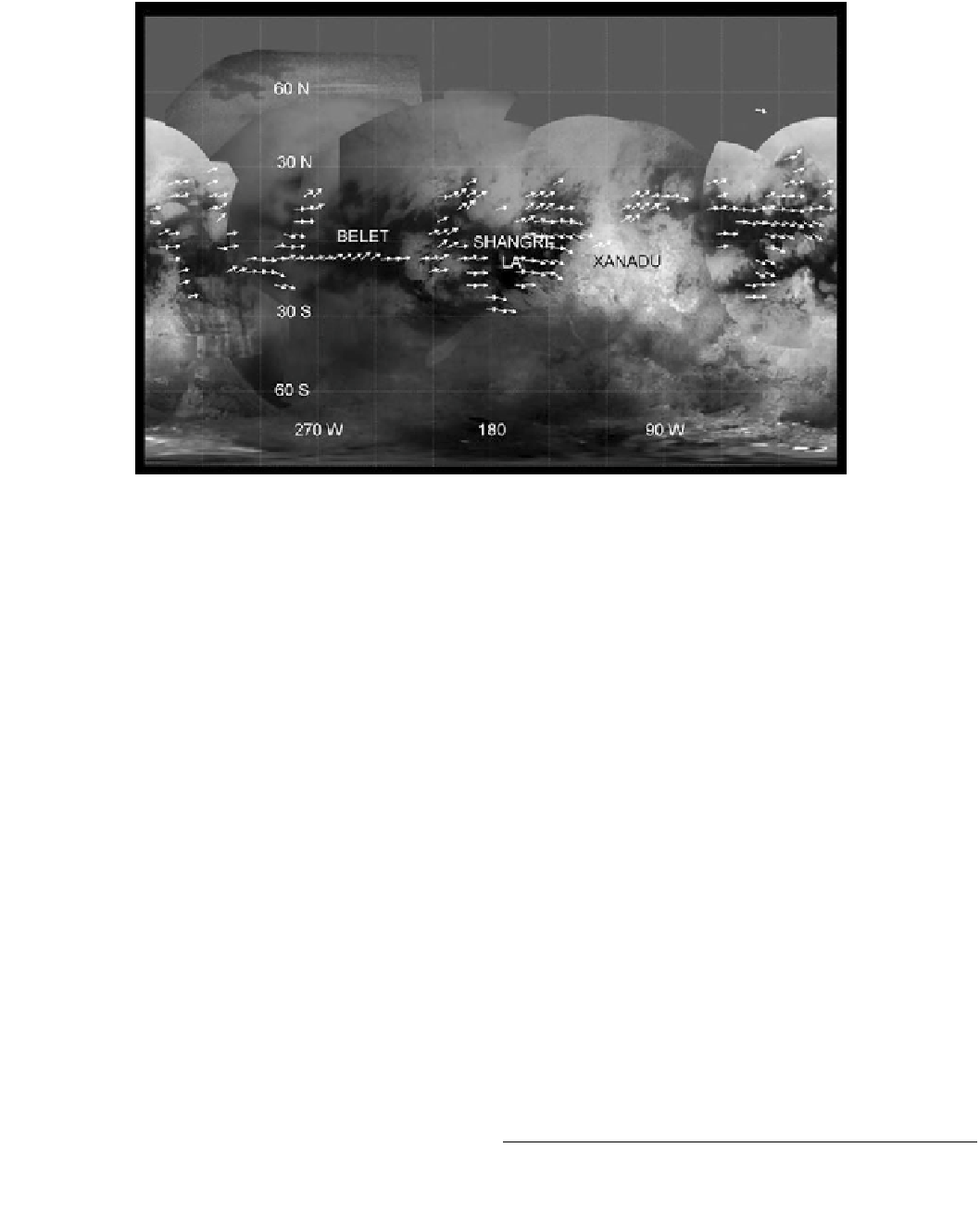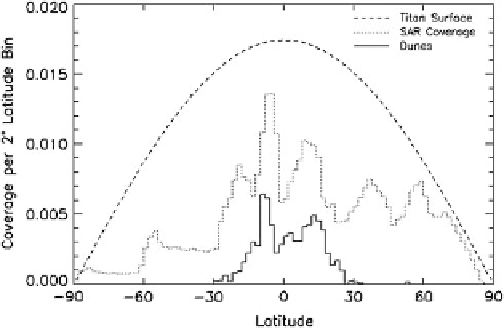Geoscience Reference
In-Depth Information
Fig. 13.9
The average orientation of Titan's dunes observed in the
prime mission in 5 9 5 degree boxes indicated with arrows, from
Lorenz and Radebaugh (2009). There is some hint of a poleward
divergence, and there are local deviations around bright areas. Note
that large dark areas still remain unobserved by radar
Fig. 13.11
A histogram (solid bars) of the observed dunes, together
with the radar coverage (dotted line). The relatively uniform radar
coverage with latitude shows that the dune distribution is not a sampling
effect—the dunes are genuinely confined to equatorial latitudes
from a previous climate epoch wherein dry conditions per-
sisted further poleward than they do now, and where the wind
regime favored a different orientation than seen today.
Fig. 13.10
A segment (120 km
2
) of the radar image acquired on
flyby T56, showing the dunes breaching into a presumed impact crater.
Towards the bottom, the dunes appear to be diverted by the bright
ejecta blanket of the crater. A similar interaction occurs on Earth at the
Cassini Radar Team/R. Lorenz
13.3
Sand Source, Amount and Composition
The optimum particle size for saltation in Titan's atmo-
sphere, assuming interparticle cohesion similar to terrestrial
materials, is about 250 microns in diameter. The likely
means for creating such material is by breakdown of coarser
in that they are radar-bright. They also have consistently more
north-south orientations than are typical for the 'classic'
dunes. A favored interpretation is that these are relic dunes



Search WWH ::

Custom Search